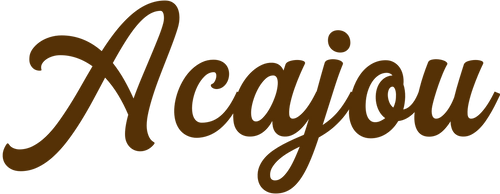Type 1 Hair: How to Identify and Care for 1A, 1B, and 1C

If you buy through links on our site, we may earn an affiliate commission. As an Amazon Associate, I earn from qualifying purchases. This keeps it 100% reader-supported and free of advertisements or sponsorships. Thanks for your support!
Type 1 hair, or straight hair whether 1A or 1B, or 1C is a gorgeous, and versatile hair type. So, what's so great about it? For one, it's incredibly versatile. You can wear it sleek and polished for a professional look, or add some texture and volume for a more playful, youthful vibe.
Type 1 hair is also a relatively low-maintenance hair type, since it doesn't require as much styling or product to look good. Plus, there's something undeniably glamorous about long, straight hair that cascades down your back like a shiny, silk curtain.
The being said, there are some challenges to having type 1 hair:
- Can look flat and lifeless, especially if lacking layers
- More vulnerable to damage from heat tools
- Long-lasting hold can be hard to come by
- Creating volume can be a struggle
We’ll go over how to avoid some of the pitfalls of straight hair and also give you a good routine and products to keep your type 1 hair healthy.
What Is Type 1 Hair?
Type 1 hair is a classification in the hair typing system created by stylist Andre Walker. Type 1 hair refers to straight hair that has virtually no curl or wave. Straight hair typically reflects light well which can make it appear very shiny.
A quick note on the hair typing system: While the hair typing system can be a useful tool for understanding your hair's texture and needs, it's not an exact science! Many people have hair that falls somewhere in between categories, so don't fret if you can decide exactly what your hair type is.
1A. vs 1B vs. 1C
Here’s a quick breakdown of the differences between the straight hair types:
- Type 1a hair is fine and thin, with a silky, almost slippery texture. It's usually very straight and doesn't hold curls or waves easily. Type 1a hair can be prone to oiliness, but it tends to look shiny and healthy when properly cared for.
- Type 1b hair is medium-textured and falls somewhere between fine and coarse. It has more body and volume than Type 1a hair, and may have a slight wave or bend to it. Type 1b hair can be versatile when it comes to styling, and is less prone to oiliness than Type 1a hair.
- Type 1c hair is the coarsest of the Type 1 hair types, with a thick, heavy texture. It may have a slight wave or bend, but overall it's still fairly straight. Type 1c hair can be difficult to style and may be prone to frizz, but it's also the most resilient of the Type 1 hair types and can withstand heat styling and chemical treatments better than Type 1a or 1b hair.

To reiterate, these aren’t terribly distinct categories and you don’t need to stress about which one you are because the routines and products for each are very similar.
How to Care for Type 1 Hair
Caring for straight hair is relatively low maintenance, but that doesn’t mean it should be neglected! Here are some tips for an easy, but thorough routine for straight hair:
1. Use a volumizing or purifying shampoo and conditioner

Since straight hair tends to be more prone to oiliness than other hair types, it's important to use shampoo that will give you a deep clean while adding minimal moisture. Look for a volumizing or purifying shampoo and a lightweight conditioner that won't weigh your hair down.
2. Avoid over-washing
Washing your hair every day can strip away the oils from your hair, leaving it overly dry and making it vulnerable to breakage. Try to wash your hair no more than every other day, or even less frequently if you can. Often your hair texture will give you a guideline for how often you should be washing your hair.

3. Clarify your scalp every week
A clarifying shampoo gives your scalp and hair an extra deep clean to keep oiliness at bay.
4. Use a wide-tooth comb
Straight hair can be delicate, so it's important to be gentle when brushing or combing it. Use a wide-tooth comb to detangle your hair after washing, starting at the ends and working your way up.
5. Protect your hair from heat
Heat styling tools like flat irons and blow dryers can be damaging to straight hair. To minimize damage, use a heat protectant spray before styling, and try to limit your use of hot tools as much as possible.
6. Avoid heavy styling products

Heavy gels or creams can weigh straight hair down, making it look flat and lifeless. Instead, opt for lightweight styling products that add volume and hold without weighing your hair down.
7. Take care of your ends
Regular trims can help prevent split ends and breakage, keeping your hair looking healthy and shiny. Using some hair oil on the ends of your hair can keep them moisturized and healthy.
Best Products for Type 1 Hair
Best Shampoo and Conditioner: Living Proof Full Shampoo and Conditioner
Best Clarifying Shampoo: Ouai Detox Shampoo
Best Hair Oil: Olaplex No. 7 Bonding Oil
Best Heat Protectant: Bondi Boost Thermal and Heat Protectant Spray
Best Texture Spray: Verb Volume Dry Texture Spray
Type 1A, 1B, 1C Hair Conclusion
Overall, healthy and well-maintained straight hair should be easy to style and look and feel healthy, with a shiny, smooth appearance and plenty of body and volume. Well-cared-for straight hair should also be soft and touchable, with a full, healthy appearance and easy to style, whether you're wearing it straight and sleek or adding curls or waves.



